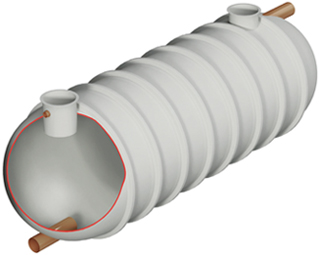Londoners in Kingston faced a possible flood as a result of a blocked drain that was clogged by a mass of fat, thought to be the largest ever in Britain. Dubbed by many as ‘fatberg’ the blockage was removed by the water authority responsible for the drain. Thames Water said that the blockage, which was under the street, was made up of some 15 tonnes of congealed fat, rotting food and sanitary wipes. They were alerted to the problem after local residents began calling them about difficulty flushing toilets. According to the water authority, pouring fat into the drain caused the problem which, had it been left, would have led to sewage flooding the streets and local businesses as well as homes.
Thames Water
“We have removed greater deposits of fat from under central London in the past,” said Gordon Hailwood of Thames Water. “However, we have never seen a single, congealed lump of fat this big blocking one of our sewers before.”
Hailwood, who is a waste contracts supervisor, went on to say that some of the sewers in the vicinity of Kingston are among the largest in the country, so in his view the fatberg was a UK record. Thames Water issued a plea for all householders to refrain from pouring fat into drains or down the sink. They also said that wipes and fat should be disposed of in the bin. Otherwise drainage sewers, even the large ones that are in London and other cities, will operate at a reduced capacity. According to the authority, the clogged up Kingston sewer was down to just 5 per cent capacity and it would have taken little more for it to become blocked with raw sewage and dispersing via man hole covers.
CCTV Drain Survey
Inspectors discovered the bus-sized lump of fat in the sewer following a CCTV drain survey. The investigations were located under London Road, in Kingston. Drain jetting specialists then blasted the huge lump of fat using high pressure hoses. Jets of water were squirted on to the fatberg from a stainless steel nozzle, called a bomb. The so-called bomb works by injecting water backwards into the blockage at very high pressure whilst the head moves forwards, cleaning the brickwork as it moves. Staff from County Clean Environmental Services said that it took no less than 10 nights of using this system to finally clear the drain.
Although, the blockage has now been removed there has been significant damage caused to the drain. Drain repairs have already begun to fix the damaged 20 metre section of sewer pipe. It is expected that this repair work will take no less than 6 weeks to complete. Traffic management systems are now in place and two lanes of London Road, which will be closed in a westbound direction between Coombe Road and Cambridge Road for some time.
In order to prevent further problems like this one, water authorities are considering new programmes of informing the public about the problems associated with fat being placed into drains. Thames Water already has a “Bin It – Don’t Block It” campaign which focuses on the correct ways to dispose of waste. The authority says that it clears about 55,000 sewer blockages each year. They put the costs of this at a staggering £12m. Each year 7,000 Londoners suffer from sewer flooding in their homes and gardens which can be a truly miserable experience.
Go back to








